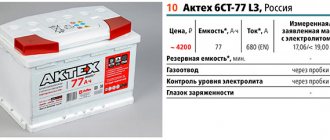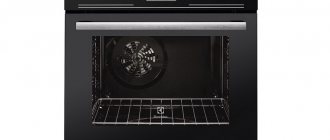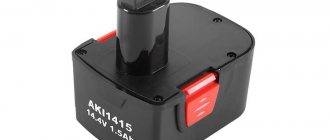With the onset of cold weather, the question of purchasing a good battery charger becomes very relevant. Many doubts and difficulties arise, which is explained by the growth of manufacturers of relevant vehicles. Let's try to understand our rating of the best chargers for car batteries in 2021. In our list you can find popular solutions of different types:
- 12V chargers – used exclusively in passenger vehicles;
- 24V chargers are used in commercial vehicles, and often also support 12V, which indicates a wider range of applications. Obviously, the cost of such chargers is higher.
Previously, many were also interested in which charger is better - pulse or transformer. Today this issue is hardly worth considering, since devices of the second type are practically not on sale; they have already outlived their usefulness, let’s say so.
Based on the control method, such devices can be divided into automatic and programmable. This is actually a matter of taste, but it is important to understand that the second type of equipment supports more subtle settings: voltage, time, temperature, amperage, etc. On the other hand, it hardly makes sense for beginners to bother with these parameters. We’ll talk more about the features of choosing these types of devices at the end of the publication.
▍ What if the battery is completely discharged?
The description says that the charger is capable of charging deeply discharged batteries with NRC from zero volts. Let's take the front AGM battery Narada Acme 12NDT100S
c NRC 2.29 V, and let's try to charge. The battery is planned to be used in conjunction with an inverter to ensure uninterrupted power supply to the laboratory.
Since the battery is very deeply discharged, we will set the current to 4 A, voltage to 14.4 V.
Many automatic chargers “do not see” batteries with too low NRC and do not start charging them. Victron Energy Blue Smart 12/15 “saw” and started. The voltage immediately jumped to 14.4 V, the current was 1.7 A. This is normal behavior for a very deeply discharged battery.
The multimeter shows the same thing.
The current increased to the specified 4 A, the voltage dropped to 13.56 V. The charger responded adequately, moving to the main charge stage.
2 hours have passed, the voltage is already 11.99 V. No, this is not a short circuit of the bank, as some forum experts would have decided, but the normal course of charging a very discharged battery.
The DC clamp confirms the readings of the ammeter of the charger.
After charging overnight, the charger is in storage mode. A total of 123 ampere hours were spent on charging.
Let's check the thermal protection of the charger. The laboratory's uninterruptible power supply inverter is powered by the battery, and the charger is trying to charge it. At a voltage of 12.77 V, the current consumed from the charger is only 15 amperes.
The charger is wrapped in fabric, its body temperature is 60.2 degrees Celsius. The current automatically decreased to 11.9 A. Thus, the device’s overheating protection functions, while the charger does not completely cut off the current supply, but limits it to a safe level.
The case temperature reached 68.4 degrees.
The current dropped to 8.5 A.
We remove the rags. As the case cools, the charger increases the current to 10.2, and then gradually to 15 amperes. So, there is thermal protection, and it is also smart, adaptive, and not just a protective shutdown before cooling or an abrupt reduction in power. This is one of the few chargers that can be used to warm up cats and other pets.
All this time, the battery was discharged, since the current consumed by the inverter was about 30 amperes. After removing the load, the charger continued to charge the battery. The current of about 1.5 A consumed by the inverter at idle did not prevent the charger from automatically completing the charge and switching to storage mode.
A kettle was connected to the inverter, the charger responded completely adequately - by switching to the main charge.
And began recording a new report on the new charge cycle. Thanks to this, you can monitor power outages and UPS operation.
>So, Victron Energy Blue Smart
is an excellent protected automatic charger for operation as part of uninterruptible power supply systems.
Now let's see what it does with customizability. Anyone who can pronounce this word without hesitation the first time, give yourself a like. Basic modes are switched with a button, and expert settings are available in the application.
The button switching cyclogram is as follows: NORMAL [14.4 V] - NORMAL [14.4 V] + RECONDITION - HIGH [14.7 V] - HIGH [14.7 V] + RECONDITION - LI-ION. Pressing the button for 3 seconds switches between maximum (15 A) and reduced (4 A) current. In reduced current mode, the LEDs for the selected charge mode will flash.
The option to switch the charger to power supply mode is located in the upper right corner of the settings screen.
In power supply mode, you can select a maximum current of 15 or 4 A and adjust the voltage up to 14.70 V in steps of 10 millivolts.
The expert settings mode is activated by the “Advanced settings” switch. At the same time, a warning is displayed that these settings are addressed to those who understand why they are changing them.
Next is the most interesting screen, where you can adjust the voltages of the profile stages and enable automatic control of the voltage increment to prevent excess electrolysis of water - the BatterySafe option. It operates only at the stage of the “secret high-voltage” Recondition charge, if it is activated, and it is this that causes the complex “ragged” shape of the voltage graph at the terminals.
The maximum possible voltage for the Recondition stage is 17.5 volts.
Hello to the myth that voltage above 14.22 - 15.6 volts kills a calcium battery.
As it turned out, it is the absence of a recharging stage with increased overvoltage that kills it. You can save multiple presets and name them.
You can also configure temperature compensation and time limits for charging stages from the expert menu.
Rating of chargers for car batteries
When compiling the rating of vehicle chargers, many checks were carried out, which included the results of comparative tests, the opinions of consumers and experts. They showed which of the models have good characteristics, as well as durability, and which of them can be used for their own purposes. Additionally, some technical properties were considered, namely:
- Voltage;
- Operating current;
- Design features;
- Nature of the battery;
- Price.
After receiving all the characteristics of each model, a rating was compiled that helps you choose a charger for a car battery that will last for many years.
The best car pressure gauges
Which car battery charger is best to buy?
High-quality devices that are aimed at quickly recharging a car have different characteristics, pros and cons. When choosing a smart charger, you need to look at its voltage and operating current levels. It is also necessary to find out the type of battery, not all of them have universal properties, some of them are not suitable for both cars and motorcycles. Before purchasing a good charger for a car battery, you need to familiarize yourself with all the models in the rating. It also includes several devices with high practicality:
- Vympel 57 is a standard device that is light weight and small in size, suitable for all motorcycles and cars;
- AVS Energy BT-6020 – a universal model for equipment, provides fast recharging;
- Auto Expert BC-65 is a convenient device with a display that displays all the information;
- Airline AJS-55-05 – a starter-charger for motorcycles and cars, has a durable body, is used mainly in car services;
- Fubag Force 220 is a device with two types of charging, has a charging current indicator, and does not overheat during operation.
When choosing a device for recharging, you need to look not only at its size and convenience of crocodiles, current strength, and charging speed. For your own use, standard models are sufficient, but for service stations and other services you need to select starting and charging devices.
It is also important to know 2 nuances about the types of memory
Chargers for cars are available in several varieties:
- Chargers.
- Launchers.
- Starting chargers.
The first two are capable of starting or charging the car separately. The third type is purchased to combine the above functions.
Units are also transformer and pulse. The second type is the most modern; they are much more comfortable to work with due to their small size and weight.
DHC SC5E
Approximate price, rub. 2000 Again they offended the Russian language: all the inscriptions on the device are not ours.
However, there is nothing to read: I connected it and forgot it. There is protection against polarity reversal, sparking, overcharging and short circuit. But its authors should be ashamed of the shameful unit of measurement of capacity “A/h” in the instructions. That's right: Ah! 5th place
TCB90 Futomatic, China
Vympel 55
The proven domestic device is considered by many to be the best programmable charger available on the market at an affordable price. Vympel 55 is designed for recharging most types of car batteries, including rare antimony, deep-cycle (Deep-Cycle) and long-life (Long Life) batteries.
Operating voltage – 6/12 V, device charging current can be adjusted in the range of 0.5-15.0 A, voltage – 0.5-18.0 V. Functions of automatic switching on (set by timer) and switching off, short-circuit protection are implemented / overheating / polarity reversal.
The device is characterized by the presence of an extensive list of settings; there are also built-in modes aimed at batteries of a certain type. Settings can be saved in non-volatile memory; if necessary, Vympel 55 can be used as a power supply, voltmeter or pre-start device. And such a multifunctional device costs about 4,500 rubles.
| Advantages | Flaws |
| Large number of built-in algorithms | Supports 12-volt batteries only |
| On/off timer | The case is fragile |
| Manual setting of algorithms | Small resource |
| Extensive additional functionality |











